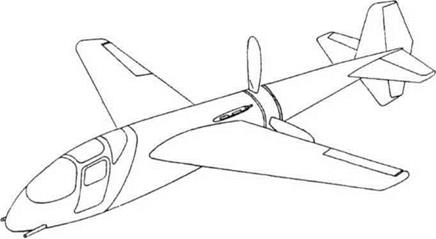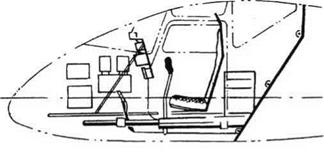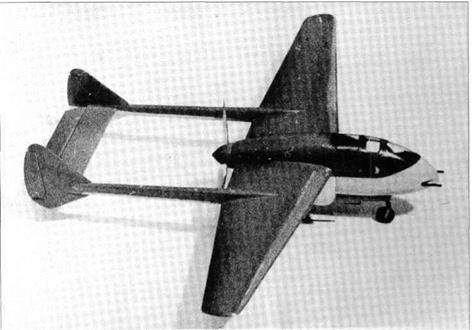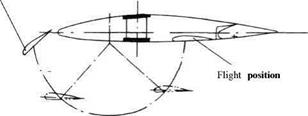Belyayev 370, EOI
Purpose: Experimental fighter.
Design Bureau: V N Belyayev, working at GAZ (factory) No 156, Moscow.
This EOI (Eksperimental’nyi Odnomestnyi Istrebitel’, experimental single-seat fighter) was proposed in early 1939, and personally approved by Stalin in August of that year. Design and manufacture proceeded through 1940, and at the German invasion of 22nd June 1941 the first flight was only a few months away.
In October the Moscow factories were evacuated. It was decided to abandon the project, and the part-complete EOI, drawings and calculations were destroyed. When photographs of the FBI (see above) were discovered it was at first thought that this must be the same aircraft. In fact, there was little similarity between the two designs apart from the basic configuration.
The EOI had the cockpit in the nose, almost perfectly streamlined, with armament in the same location. Possibly for the first time in history, Belyayev designed the entire front section of the aircraft to be separated in emergency, so that the pilot would not have to bail out ahead of the propeller. The latter was to be driven by a Klimov M-105 engine, rated at l,100hp and fitted with a TK-2 turbocharger. In the original scheme, like fighters of 1917 by Gallaudet in the USA and Dufaux in France, the propeller was to have a large-diameter hub through which passed a tube carrying the rear fuselage. Some of the ‘370’ drawings are reproduced overleaf. One shows the proposed cockpit, armament of two underfloor VYa-23 cannon and location of the cartridge-severed attachments. Another drawing shows the unique arrangement in which the wing was to be provided with a slat. This auxiliary surface was normally
housed in a recess immediately ahead of the flap or aileron. For take-off and landing it was to be swung down and forward to adopt a leading-edge-down attitude ahead of the leading edge of the wing. Thus, it was a bolder precursor of today’s Krueger flap. Whether or not this aerodynamically powerful idea was abandoned is unknown, but Belyayev certainly abandoned the original rear fuselage. By late 1939 he had decided to use conventional twin tail booms. The specification overleaf applies to this revised scheme.
According to one document it was intended that a production version should have had the M-106 engine. This would have been rated at 1,350hp, instead of 1,100hp. Whether the unconventional configuration, and especially the potentially dangerous slat system, would have shown to advantage will never be known.
|
|
 |
|
|
|
|
|
|














